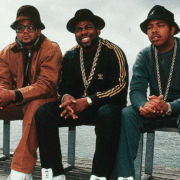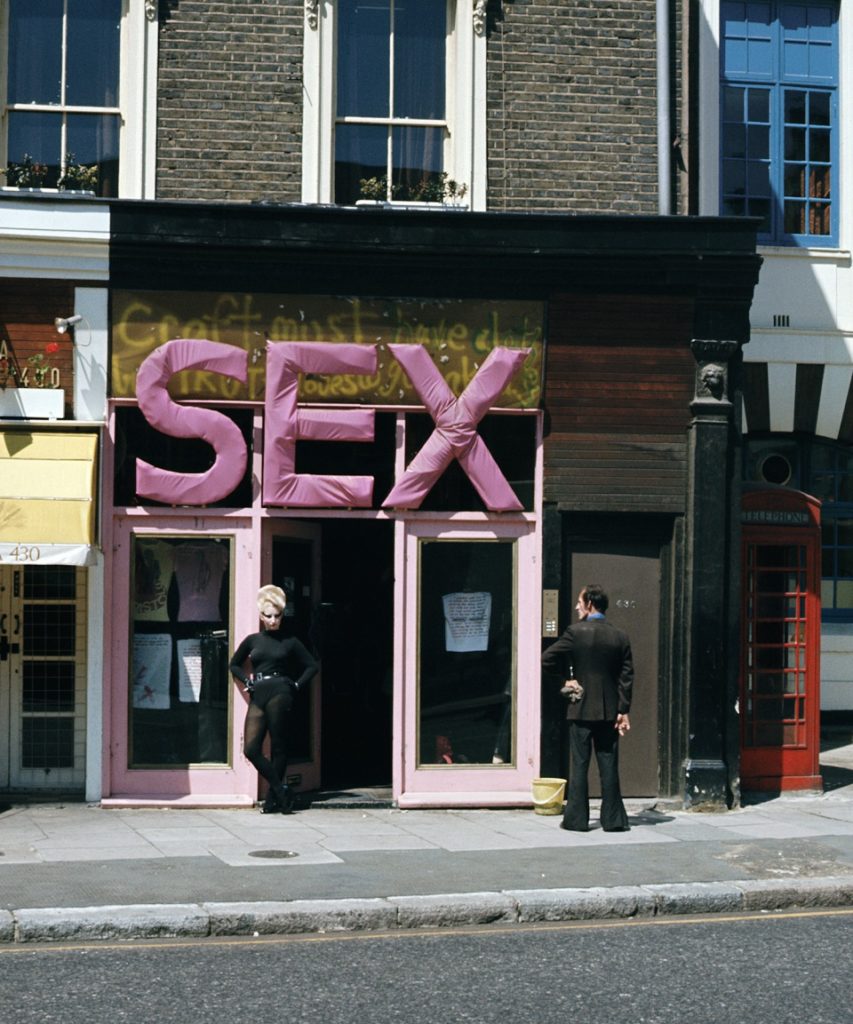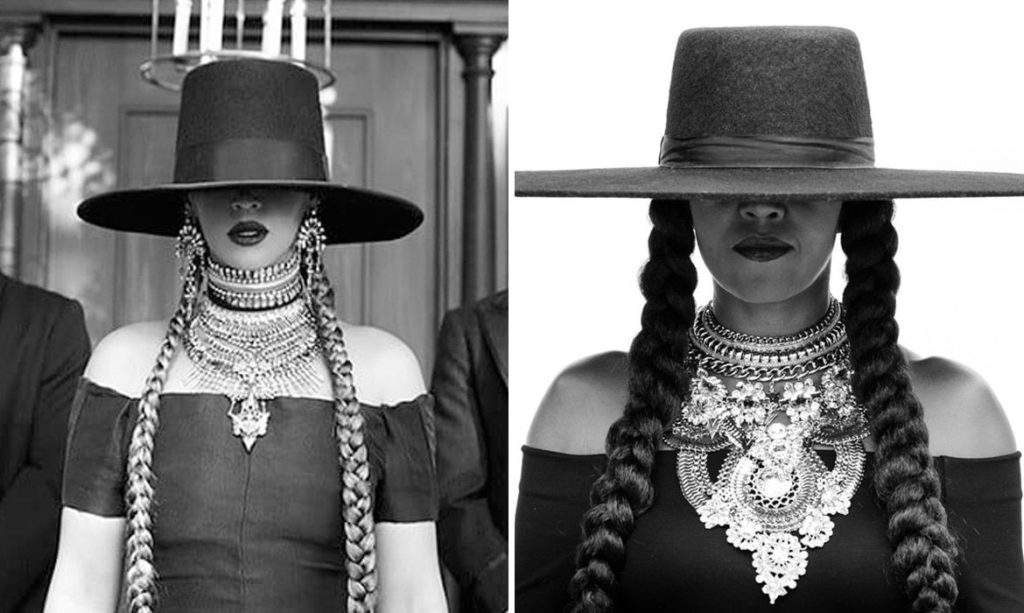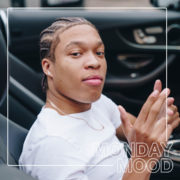Concert fashion and music merchandise: pledging allegiance to music with style

Harry Styles fans have been dominating more than just the internet for the past couple of months.
The pop star’s tour wardrobe has been serving look after look on his North American tour, but he’s been shown up by his fans who, dare we say, dress better than he does. While the future of the tour now looks uncertain, the fan base needn’t worry. They didn’t need shows all over the world to truly re-define what concert fashion should be. Since show one, fans have been posting their concert ensambles under the hashtag #hslotoutfit (Harry Styles ‘Love On Tour’ Outfit), and making his shows feel more like a Met Gala red carpet than a music performance.
The loyal fans are dripping in sequins, feathers, rainbow jewelry, boas and itty-bitty handbags. They’ve taken the ‘Harry Styles’ look and ran with it. Following his lead, Styles fans have been pushing the boundaries with not only their own fashions, but with their practical skills; learning to crochet so they can make their own replica of a cardigan he wore, they screen-print their own T-shirts to match ones he’s worn, they create their own jewelry spelling out song titles with intricate beads – they bring his popstar look onto the body of the everyday person and rock it.
Fans have adopted fashion as a show of appreciation and love towards the artist and their music. These clothes mean something to them. This isn’t an unusual phenomenon within the world of music, fashion and music are entirely synonymous. Music is a huge part of people’s lives and connecting with it in more ways than simply listening to and loving a musician is kind of the point. We want to show off our passions, and what better way to do this than through fashion?
As countless musicians have done before him, Style’s stands for a liberating crush of self-expression. The emphasis on the physical image of music and its close relationship with fashion is visible throughout history; from jazz influencing the 1920’s flapper movement, to flared jeans and flower print in the hippy dominated 60’s, to the worn-out flannel shirts of Kurt Cobain and his fans in the 90’s.

Throughout music history, most musicians have styled themselves in a way that represents their musical genre. We had The Beatles with their floppy hair and fitted suits, The Sex Pistols with their distressed denim and t-shirts with more holes than fabric, Run DMC had the thick gold chains, brimmed hats and adidas sneakers. The fans consistently followed the stylings of their favourite musicians, inadvertently creating a uniform for each genre. This music gave them identity and community. Branding themselves as part of whatever genre through their fashion choices shouted their loyalties to the world, loud and proud.
Music and fashion have consistently survived and thrived together. The two cultural elements have always reflected the times in which we live and fuelled one another to consistently keep upping the game. Maybe then, it’s no surprise that music also brought around the idea of fashion as rebellion. Artists like Bob Dylan, Jimi Hendrix, and NWA, who spoke unapologetically against the establishment gave a visual to rebellion that could be worn everyday and make a statement everyday. No longer did you need to carry around a placard with some witty political message, you could go out in shabby, thrifted clothing, or with long hair and a flamboyant shirt, or in a monochrome black and silver fit with a baseball cap, and be making a political statement.

Many music subcultures popularised once niche fashion looks so much that they eventually became high fashion. From Punk we got high end designers like Vivienne Westwood who opened her fashion and fetish boutique to cater to the punks of London who had until then relied on DIYing mainstream clothing to get their desired look.
Westwood’s fetish and bondage clothing was loaded with studs and safety pins, tartan and spiked leather lined the walls, and T-shirts with boobs or the defaced queen screen-printed on the front quickly became the ‘uniform’ of punk, and Westwood’s store ‘SEX’ was a hotspot of punk activity with the likes of The Sex Pistols, Siouxsie Sioux, and The Banshees, embracing her designs as well as her company. Nearly 5 decades since opening her boutique, Westwood is one of the most recognisable designers in the world, all thanks to the music of punk and the fans dying to emulate their favourite musicians iconic style.
Westwood set a kind of blueprint for making money off the integration of fashion and music. We got lost for a while in the capitalist fight to sell fans as much branded merchandise as humanly possible which left us all crying to our poor parents, who had already splashed out more than they’d like on concert tickets, to buy us a t-shirt with our favourite pop stars’ face on it. This music merchandise dominated concert and street fashion for a while (seriously, did any mens clothing between 2011 and 2013 not have Rhianna’s face on it?). We now have musicians stepping into fashion design to give their fans other ways to visually connect with them and their music.
It’s not just musicians profiting off the fashion of their genres. High fashion and fast fashion brands respectively can see the popularity of celebrities and their attire. From Gucci tracksuits costing thousands seen on the likes of Jay-Z, to FashionNova churning out collections with Cardi B, there’s money to me made thanks to fan dedication. And it’s not just fashion that musicians are venturing into. Selena Gomez is but one artist who has her own make-up line that stands as a successful cosmetics company in it’s own right, we’ve got countless artists creating colognes & perfumes – Nick Jonas has his own Tequila brand!

Today, music informs fashion more than it ever has, albeit on a more superficial level. Music’s ability to influence fashion has affected fans the same way it has for decades. However, today someone might buy the latest Golf Wang or Ivy Park line because they want to look like Tyler the Creator or Beyoncé, or they’ll dye their hair with Paramore’s Haley Williams ‘good-dye-young’ hair dye brand to feel closer to the artist. Whereas in music high points of days gone by, the fans had to DIY the look of whichever ‘it’ musician they ordered, there was no pressure for fans to show musicians appreciation in any way but to listen to and love the music.
It’s impossible to compare the likes of Yeezy and Fenty fashion to the somewhat failure of Olivia Rodrigo’s merchandise venture. The former have created fashion side projects, yes to profit from their fame but they’re offering a quality, passion-filled product that can stand separately from their music careers. The latter aims to flog sub-par merchandise to an audience willing to lap up whatever half-hearted crap an artist throws their way.
Maybe Harry Styles fans will help in prompting a change? We’ve seen how amazing they look and how much fun they seem to be having with creating their concert fits on TikTok, how can putting on a $60 t-shirt with -insert popstars name- ‘s face on it compare with honing and curating a unique, feel-good outfit that encompases and visualises your love for said musician? What you wear to a show acts as a cultural signifier; exemplifying your level of fandom, knowledge of the artist, who you are, who you want to be, or, at least, what you want to be perceived as being.
It’s about embracing, not duplicating and Styles’ fans have hit that nail on the head. Hopefully, others will take note and all concerts can become mini Met-Galas allowing fans of all genres to show up and show off their unique uniforms.

Discover more from GUAP’s Fashion section here




![ZINO VINCI’S ‘FILTHY & DISGUSTING’EP BRINGS YOU TO THE CORE OF THE ARTIST [@ZinoVinci]](https://guap.co/wp-content/uploads/2023/10/Zino-4.jpg)



